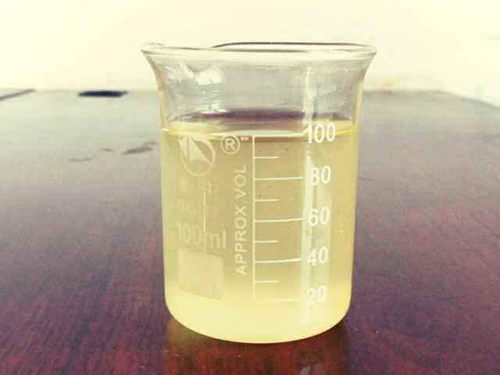phosphorothioate
Phosphorothioate A Multifaceted Compound in Biochemistry and Genetics
Phosphorothioates are a class of chemical compounds characterized by the substitution of a sulfur atom for one of the non-bridging oxygen atoms in phosphate groups. This modification imparts unique properties to phosphorothioates, making them invaluable tools in various fields, including biochemistry, molecular biology, and medicinal chemistry. As researchers explore the potential applications of phosphorothioates, their significance continues to grow, particularly in the context of nucleic acid chemistry and therapeutic development.
At the molecular level, phosphorothioate derivatives are often synthesized as analogs of nucleotides. As building blocks of nucleic acids, nucleotides are critical for the storage and transfer of genetic information. The incorporation of phosphorothioate linkages into DNA and RNA strands enhances their stability against nuclease degradation, thereby improving their potential as therapeutic agents in gene therapy and antisense oligonucleotide applications. This modification enables the oligonucleotides to resist enzymatic cleavage, thus prolonging their half-life in biological systems and enhancing their overall efficacy.
One of the most promising applications of phosphorothioates is in the development of antisense oligonucleotides (ASOs). Antisense technology leverages the principle of base pairing to inhibit the expression of specific genes. By designing ASOs with phosphorothioate linkages, researchers can create potent agents that target and silence mRNA transcripts associated with various diseases, including cancer and genetic disorders. The improved stability and increased affinity for their target RNA make phosphorothioate-modified ASOs superior to their unmodified counterparts.
Furthermore, phosphorothioates can be utilized to modulate cellular processes through the targeted manipulation of gene expression. Recent studies have demonstrated that phosphorothioate-modified small interfering RNAs (siRNAs) exhibit enhanced stability and potency, making them effective in RNA interference (RNAi) applications. RNAi is a powerful tool in molecular biology for silencing genes, and the use of phosphorothioate modifications facilitates more efficient delivery and longer-lasting effects. This enhancement in performance opens doors to innovative therapeutic strategies for various diseases, including viral infections and genetic conditions.
phosphorothioate

Beyond their applications in gene therapy, phosphorothioates are also gaining attention in the field of drug discovery. Researchers are investigating their potential as pharmacological agents due to their ability to interact with biological targets with high specificity. The introduction of phosphorothioate linkages can influence the binding properties of molecules, potentially leading to the development of novel inhibitors for enzymes or receptors involved in disease processes. This approach has significant implications for targeted therapies, as it allows for the design of compounds with tailored properties that can improve efficacy while minimizing off-target effects.
However, the use of phosphorothioates is not without challenges. Despite their many advantages, the introduction of sulfur in place of oxygen can lead to changes in the physicochemical properties of the compounds, potentially affecting their solubility, permeability, and overall bioactivity. Researchers must carefully balance the benefits of increased stability and binding affinity with possible drawbacks, necessitating extensive testing and optimization in drug development workflows.
Moreover, the long-term safety and biological effects of phosphorothioate-modified compounds are still under investigation. While initial studies suggest favorable pharmacological profiles, comprehensive toxicological assessments are crucial for ensuring that these compounds can be safely used in therapeutic applications.
In conclusion, phosphorothioates represent a groundbreaking modification in the field of nucleic acid chemistry, offering enhanced stability and potential in therapeutic interventions. Their applications in antisense technology, RNA interference, and drug discovery highlight their versatility and promise in modern biomedical research. As scientists continue to unravel the intricacies of phosphorothioate chemistry, they pave the way for novel therapeutic solutions that could address a myriad of genetic and acquired diseases, transforming the landscape of modern medicine. Through ongoing research and development, phosphorothioates stand poised to play an essential role in the future of genetic and therapeutic innovation.
-
Water Treatment with Flocculant Water TreatmentNewsJun.12,2025
-
Polymaleic AnhydrideNewsJun.12,2025
-
Polyaspartic AcidNewsJun.12,2025
-
Enhance Industrial Processes with IsothiazolinonesNewsJun.12,2025
-
Enhance Industrial Processes with PBTCA SolutionsNewsJun.12,2025
-
Dodecyldimethylbenzylammonium Chloride SolutionsNewsJun.12,2025





